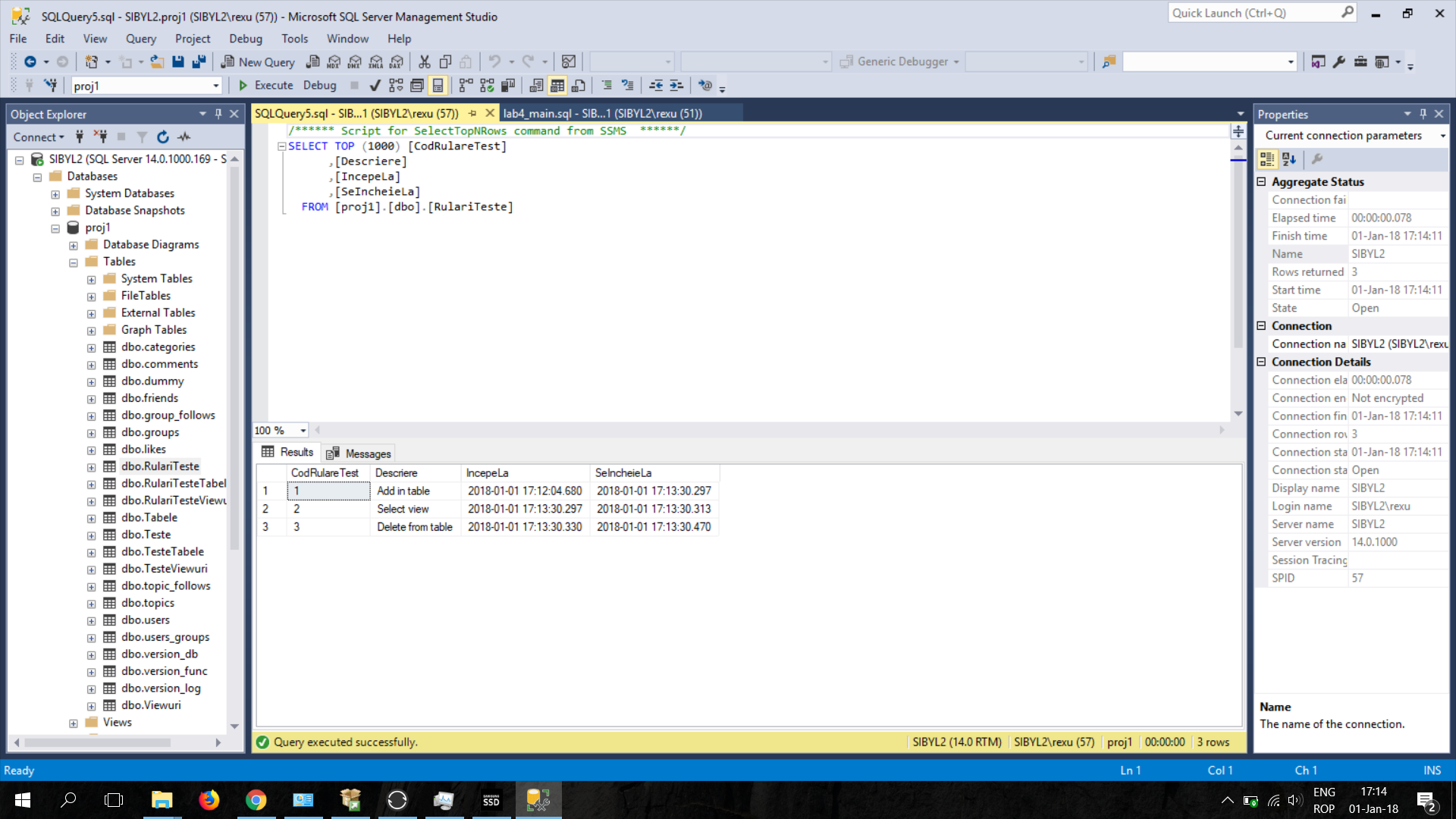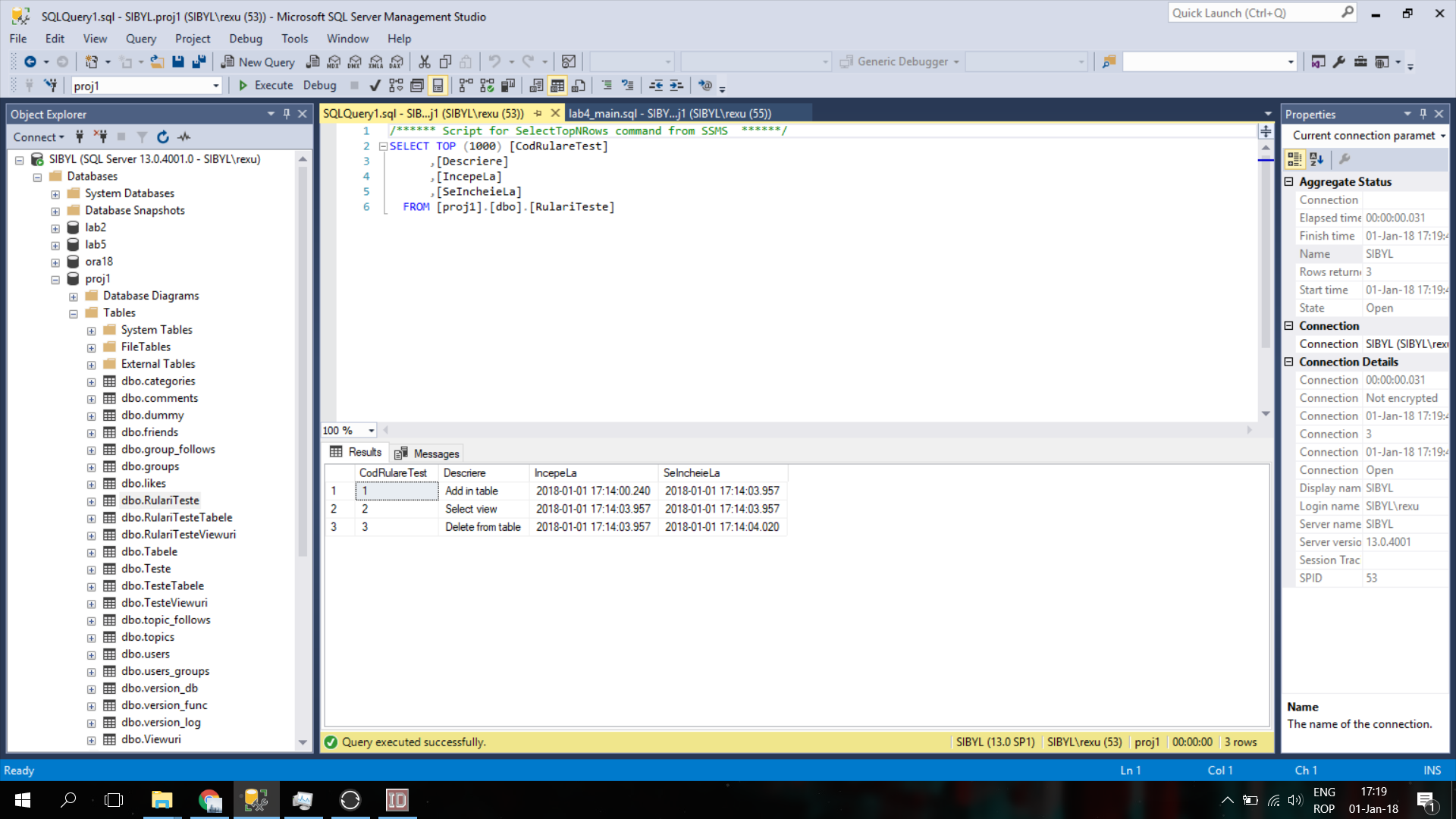I'm out of ideas, so I'm asking for your help. I have a weird problem which I cannot find a cause for no matter how much I search on the internet.
Thing is, I have two laptops:
l1 : HDD and a Kingston HyperX Fury SATA-III SSD (240G)
l2 : HDD and a Samsung 960 evo, nvme SSD (500G)
And I have a procedure to test the performance of the database, which inserts, selects and deletes from 3 different tables, in numbers of 10,000 and 100,000.
l2 was bought after l1 and I tried to migrate everything I had on l1 to l2, including the databases. After running the performance procedure I noticed something weird, l2 was taking way more than l1 was taking. An example being the insertion of 10,000 lines in a table, l1 would take 1 second, where l2 would take 28 seconds. Of course I didn't have the patience to try the 100,000 insertions on l2, where on l1 would take only 40 seconds.
So, I tried to find the root of the cause. Opened task manager (I'm using Windows 10), performance tab and found out that, when it's about to insert, the SSD is writing only with 200kb/s, whereas l1's SSD writes with 4.4MB/s.
Of course, I took the possibility that the SSD might be defected so I used 3 benchmarks to see. First one I used was Samsung Magician, CrystalDiskMark and AS SSD Benchmark. All of those 3 benchmarks said there is no problem and my SSD is working at the speed it should be working. I have to note that all my drivers are up to date and the firmware of the ssd is the latest one. I tried reinstalling the SQL Server, I tried changing the editions from Enterprise to Developer (Developer being the one I use on l1).
Another thing I tried was, detaching the database. moving it to the other drive and attaching it back. To find out that, it works better than on the ssd.
The results for each performance check (10,000 inserts + select + delete): (IncepeLa = StartsAt, SeIncheieLa = EndsAt)
In the end, the question is... Why does SQL Server perform significantly worse on a piece that is supposed to be superior to an HDD?
Edit:
Edit 2:
I added another image that shows an interesting thing regarding the stall time.

Ugly code:
declare @id_test int
declare @name_test nvarchar(50)
declare ctest cursor
for
select CodTest, Nume from Teste;
open ctest
fetch next from ctest into @id_test, @name_test;
while @@FETCH_STATUS = 0 begin
if @name_test = 'insert'
-- @name_test TesteTabele
begin
declare @t_t_cte int
declare @t_t_cta int
declare @t_t_nr int
declare @t_t_p int
insert into RulariTeste (Descriere, IncepeLa, SeIncheieLa) values ('Add in table', SYSDATETIME(), null);
declare c_t_t cursor
for
select * from TesteTabele
open c_t_t
fetch next from c_t_t into @t_t_cte, @t_t_cta, @t_t_nr, @t_t_p
while @@FETCH_STATUS = 0 begin
insert into RulariTesteTabele (CodRulareTest, CodTabel, IncepeLa, SeIncheieLa) values (@t_t_cte, @t_t_cta, SYSDATETIME(), 0);
exec('addfields' + @t_t_cta + ' ' + @t_t_nr);
update RulariTesteTabele set SeIncheieLa = SYSDATETIME() where CodRulareTest = @t_t_cte and CodTabel = @t_t_cta;
fetch next from c_t_t into @t_t_cte, @t_t_cta, @t_t_nr, @t_t_p
end
close c_t_t
deallocate c_t_t
update RulariTeste set SeIncheieLa = SYSDATETIME() where @id_test = CodRulareTest;
end
else if @name_test = 'select'
-- @name_test TesteViewuri
begin
declare @t_v_ct int
declare @t_v_cv int
insert into RulariTeste (Descriere, IncepeLa, SeIncheieLa) values ('Select view', SYSDATETIME(), null);
declare c_t_v cursor
for
select * from TesteViewuri
open c_t_v
fetch next from c_t_v into @t_v_ct, @t_v_cv
while @@FETCH_STATUS = 0 begin
insert into RulariTesteViewuri (CodRulareTest, CodView, IncepeLa, SeIncheieLa) values (@t_v_ct, @t_v_cv, SYSDATETIME(), 0);
select * from (select Nume from Viewuri where CodView = @t_v_cv) as aview;
update RulariTesteViewuri set SeIncheieLa = SYSDATETIME() where CodRulareTest = @t_v_ct and CodView = @t_v_cv;
fetch next from c_t_v into @t_v_ct, @t_v_cv
end
close c_t_v
deallocate c_t_v
update RulariTeste set SeIncheieLa = SYSDATETIME() where @id_test = CodRulareTest;
end
else if @name_test = 'delete'
begin
insert into RulariTeste (Descriere, IncepeLa, SeIncheieLa) values ('Delete from table', SYSDATETIME(), null);
delete from topic_follows;
delete from topics;
delete from users;
update RulariTeste set SeIncheieLa = SYSDATETIME() where CodRulareTest = (select TOP(1) CodRulareTest from RulariTeste order by CodRulareTest desc);
end
fetch next from ctest into @id_test, @name_test
end
close ctest;
deallocate ctest;
The addfields functions are supposed to add fields for the tables, with a while.
Edit 3: To make matters more clear, it's not about the algorithm used. I'll demonstrate by making a while in which I add 10,000 values. Once when the db is on the SSD and once when the db is on the HDD, I'll use only l2 for this test.
An image consisting of both, because it's the last one I can post (I don't have 10 reputation to post more than 8 images)

As it can be noticed, when the db is on the HDD it executes the inserts in 2 seconds, whereas when it's on the SSD it inserts them in 27 seconds.






